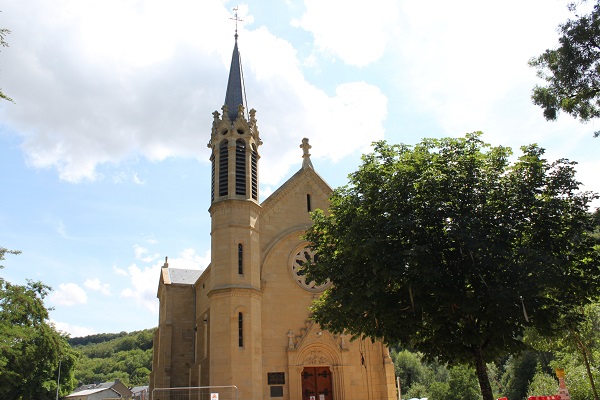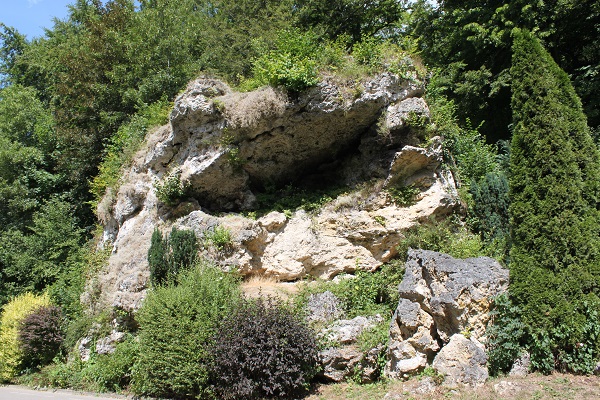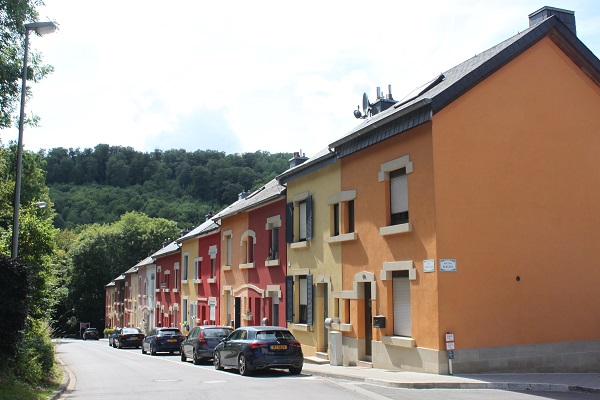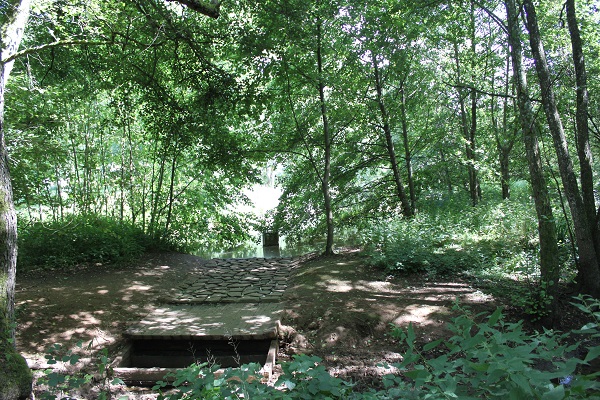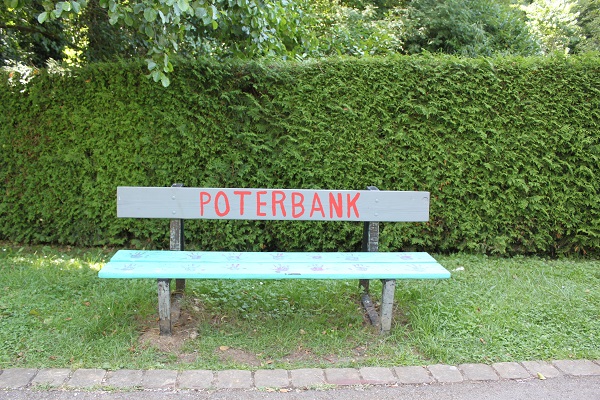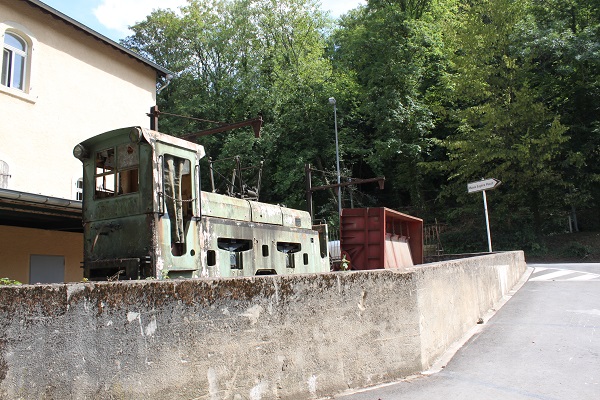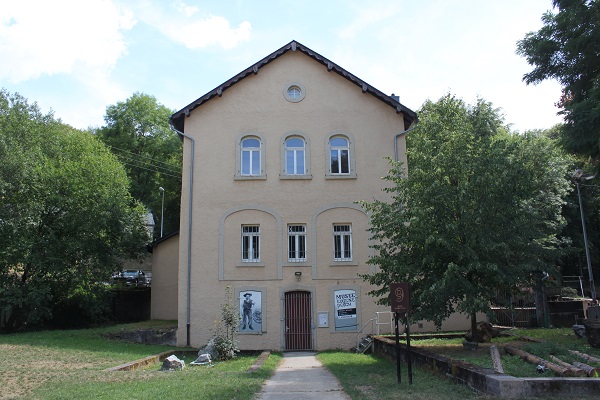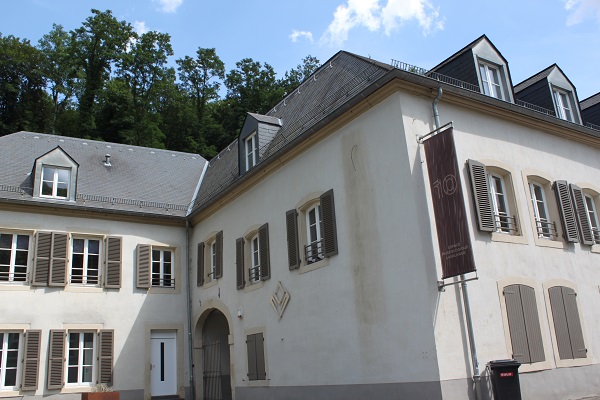 Lasauvage village sign;
Credit: Otilia Dragan, Chronicle.lu
Lasauvage village sign;
Credit: Otilia Dragan, Chronicle.lu
Throughout August, Chronicle.lu will be shining a spotlight on various villages across the Grand Duchy; the focus is mainly on some of the (perhaps) lesser-known villages with particular points of interest or an interesting history (e.g. cultural and/or industrial heritage).
The next article in this series is dedicated to Lasauvage, a village in the municipality of Differdange in south-western Luxembourg (Canton Esch-sur-Alzette) with a population of about 460. The Crosnière river flows through the village, which is located near the Luxembourg-France border.
Lasauvage (Zowaasch in Luxembourgish) is a village shaped by its industrial past, but it also has intriguing local lore of a “wild woman”. According to the legend, Lasauvage (Val de la sauvage femme) was "founded" by a wild woman who lived in a cave in the "La Cronnière" cliff. The image of the "barbarian" and her "exorcism" can allegedly be seen on the cliff in question. In 2022, as part of an overarching Esch2022 - European Capital of Culture project, the artists’ group Maskénada brought together young local authors Antoine Pohu, Maxime Weber and Cosimo Suglia who created a walking tour and theatre experience.
Created at the start of the 17th century around one of the first ironworks, with a steelworks, forge and housing for workers, Lasauvage is still distinguished by its layout with two village centres. Three essential elements for steelmaking were present on the village’s site, making it a good choice for a settlement despite it being embedded in a narrow valley: iron ore as raw material, wood from the forests as fuel and water from the Crosnière river as a driving force.
From 1880, the owner of the factory and of the new mine in operation, the Count of Saintignon, gradually renewed the site by having new housing and public infrastructures built namely a school, a canteen, a dance hall and a grocery store. The life of workers in Lasauvage was allegedly better and cheaper than in other mining villages. The village’s old layout has largely been preserved to this day. The Lasauvage church (currently undergoing renovation works), the Auberge de la Promenade and many of the houses (and their placement) are still reminiscent of this bygone era.
The Eugène Pesch museum and the Lasauvage museological area are a five-minute walk from each other. The former is a collection of fossils and minerals compiled by the Differdange-born Luxembourg collector Eugène Pesch and offers a reconstruction of a mining tunnel and an exhibition on the difficult working conditions that miners faced in the early 1900s. The latter is housed in the old building where Count Saintignon, the ironmaster of Lasauvage, lived. It is dedicated to the history of Lasauvage and to a group of young Luxembourgers who hid in a mine during World War II in order to avoid wearing the “Wehrmacht” (Nazi army) uniform.
Lasauvage has beautiful surrounding natural areas to explore, including the recreated factory pond "Kiercheweier", which is closely linked to the industrial past of the village. Information panels nearby tell the story of the area and pond in some detail, featuring old photographs. The launch of the steel industry generated the need for hydraulic energy to run the machines. The water was stored in reservoirs and transported through a system of canals. Nevertheless, the quantities were insufficient to guarantee a long-term exploitation. When the steelworks closed in 1877, the pond became a place of leisure, where swimming, rowing and sports competitions were held.
According to the local information panels, at the beginning of the 19th century and in 1950, several soil erosions due to putrefied mud caused unbearable smells. The first time, a digging project was attempted, but the second time the pond was completely filled.
50 years later, in 2011, the municipality of Differdange decided to recreate the Kiercheweier. It was dug at the same location, with major works and planting local vegetation carried out around it. A stabilised path allows visitors to walk along the banks and pontoons and shelters offer views as the pond used to at its most popular days in the 19th century. It is now in the midst of a protected nature reservation with information panels about the species of animals to be found nearby. A playground for children is not far away, with the interesting addition of a “Poterbank”, a chatting bench, inviting visitors to sit on it if they feel like chatting to someone new.
There is also a puppet theatre (Poppespënnchen) in the vicinity of the Lasauvage school, putting on French, German and Luxembourgish shows for children. Le Presbytère, a hotel-restaurant, occupies a central position in the area. The industrial and railway park in Fond-de-Gras with its historical steam train "Train 1900", the café Bei der Giedel, a former miners' canteen built in 1881, and the reconstruction of a Differdange grocery shop from the beginning of the 20th century are other historical highlights in close proximity to Lasauvage.


